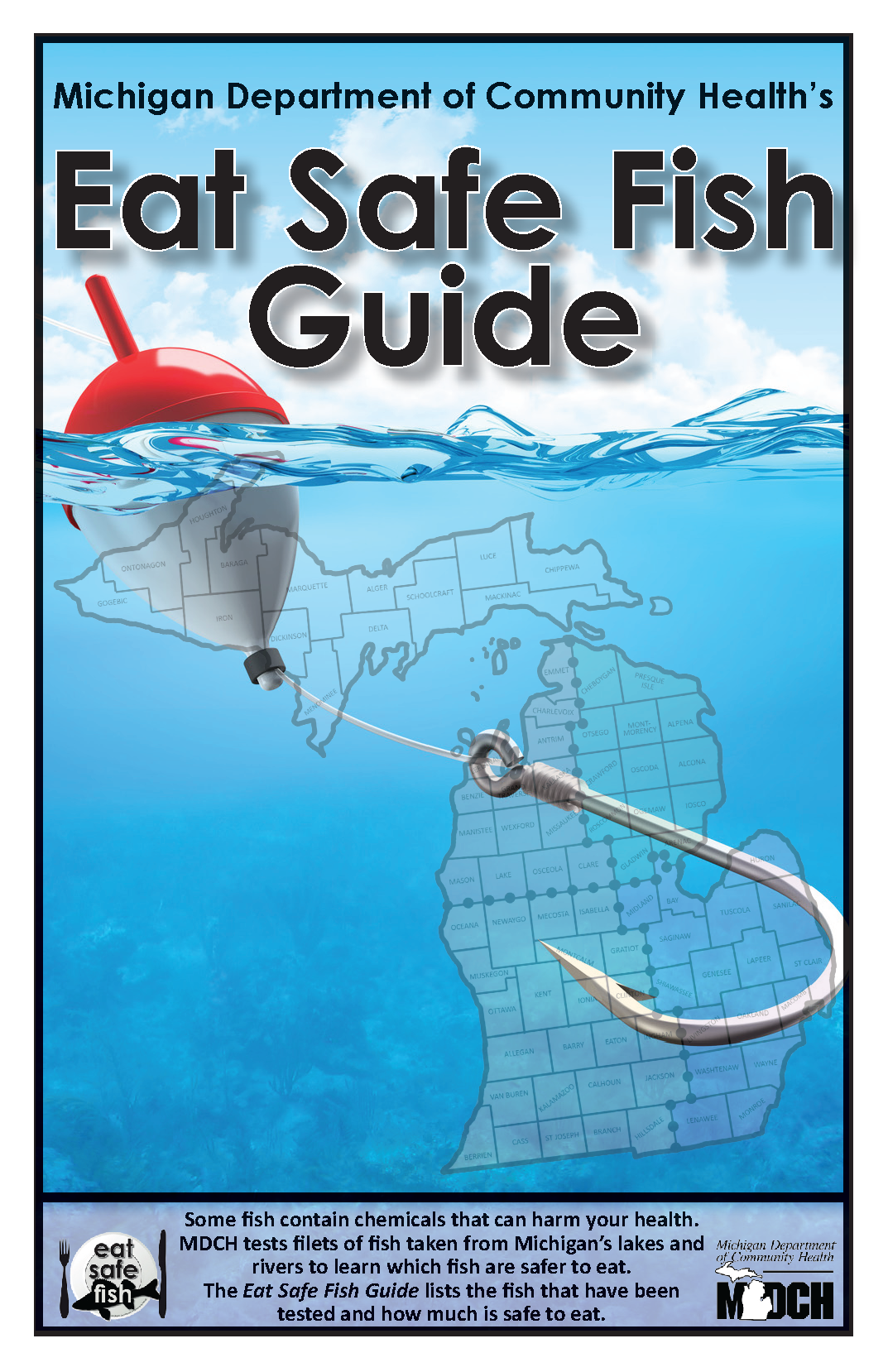
Michigan’s Eat Safe Fish Guide advises Michiganders on what species of fish, and from where they are caught, are safe to eat. Image: Michigan Department of Community Health.
For years, pregnant women have been advised to stay away from eating fish because of their mercury content. But last week’s announcement by the U.S. Food and Drug Administration and the U.S. Environmental Protection Agency tweaked that advice, making it clear that it is healthy to eat fish without troublesome mercury levels.
Fish that are packed with protein and omega-3 fatty acids make an extremely healthy meal for the mother and child, as long as it is low in mercury, EPA, FDA and Michigan Department of Community Health officials now officially advise.
State and federal health authorities have long advised that eating too many fish meals containing mercury can damage the brain, nervous system and kidneys, and even harm the development of a pregnant woman’s fetus.
This is the first time that eating a minimum amount of low mercury fish has been promoted as a guideline when announcing new draft mercury standards.
The guideline announced last week reaffirms what was already known to be true, but not well communicated, said Kory Groetsch, a toxicologist at the Michigan Department of Community Health. Eating small amounts of fish with low mercury levels has always been safe for pregnant women and children, but it was not emphasized in communication, he said. This announcement also applies to breastfeeding women and those who might become pregnant.
“They sort of re-looked at their advisory, tweaked it, and this time they are re-announcing it and putting a real emphasis on saying it is OK for pregnant women, and it’s actually healthy,” Groetsch said.
According to Groetsch, there are nutritional benefits of eating a protein-rich meal of fish, and health benefits such as giving birth to heavier, healthier babies with better vision and improved brain function. Those benefits are linked to the omega-3 fats that fish contain.
The FDA and EPA still advise to keep away from fish with high mercury levels including tilefish from the Gulf of Mexico, shark, swordfish and king mackerel. They also recommend limiting the eating of white albacore tuna to six ounces per week.
According to the draft guidelines, some low mercury fish include shrimp, pollock, canned light tuna, tilapia, cod, catfish and salmon. These guidelines pertain to store-bought fish, and are not necessarily applicable to fish freshly caught by anglers in Michigan, Groetsch said.
States set their own consumption advisories for fish caught by anglers for their own use. In Michigan, each type of fish and the amount you can safely consume depends on the area from which it is caught. You can check out the recommended serving sizes on the state health deparment’s Eat Safe Fish program webpage.
When fishing on lakes, rivers or streams, the state health department stresses to check with local fish advisories before eating your catch. The DCH’s Eat Safe Fish program and Eat 8! store and restaurant guide analyze mercury contents in store bought and wild fish, Groetsch said.
If there is no information about a certain lake or fish species, the EPA and FDA recommend that only six ounces be eated a week, and only one to three ounces for children. Michigan also has a statewide fish advisory, which sets a standard for all fish consumption where information is not available.

Michigan’s statewide fish advisory is a standard that should be followed if there is no information about a certain fish in a specific area available. Image: Michigan Department of Community Health.
Groetsch said that overall the Statewide Safe Fish Guidelines advise Michiganders to consume only eight servings per month of fish including sunfish and bluegill because of their low mercury content. It advises four servings of catfish, yellow perch and rockbass per month, as long as they are not contaminated with PCBs, and only one serving per month of large predatory fish including pike and walleye. He said that salmon caught on the Great Lakes is a good choice to eat, as long as it is trimmed of the fat and cooked correctly.
“If we tested Round Lake and smallmouth bass, we will publish that in our guide – that it is safe for pregnant women, children and adults and the number of meals that would present minimal risk,” Groetsch said. “That is what we call safe for everyone.”
Mercury is a pollutant often associated with coal-fired power plants and when it is released into the atmosphere, it can be deposited in water sources and then turn into methylmercury and accumulate in fish, the Michigan Department of Environmental Quality explains. Other pollutants the state guidelines account for are PCBs, or polychlorinated biphenyls, that have infiltrated Great Lakes waterways and in some areas made fish unsafe to eat.
State authorities recommend that these precautions simply be taken for what they are, draft guidelines.
“It’s important for people to read this really closely and to note that these are draft guidelines,” said Andy McGlashen, the Michigan Environmental Council’s interim communications director. “It’s not just saying I should go out and eat as much fish as I want.”